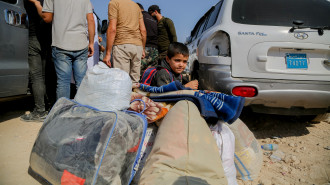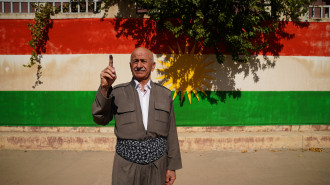Death on Riyadh's roads
As a group of dental nurses made their daily journey to work, they could hardly have expected that, for some at least, this journey would be their last.
As their bus toddled along the road into Jizan from al-Karbus, in the southwest of Saudi Arabia, the vehicle overturned, killing three nurses and injuring eight others.
Accidents such as this have become so common on Saudi Arabia's main roads that they no longer receive much coverage in the media.
"Saudi Arabia leads the world in terms of road accident ratesm" said Hazem al-Kinani, the director of the Saudi Centre for Security and Safety.
"Road traffic accidents are the biggest security danger facing Saudis today. They have depleted a great deal of our human and economic resources, especially on the intercity highways which lack of maintenance and safety measures has turned into death traps."
Kinani revealed that more than 86,000 people have been involved with traffic collisions in Saudi Arabia over the past two years.
"Statistics confirm that Saudi Arabia holds first place in the number of [road traffic accident] fatalities, with approximately 49 deaths per 100,000 people. This costs the country over more than SR13bn ($3.4bn) every year," he said.
"On top of this, almost a quarter of RTA injuries prove fatal, and over a third of Saudi hospital beds are occupied by RTA victims."
| 80 percent of patients in the city's intensive care units are young people who have been involved in traffic accidents. - Siraj al-Humaidan, Taif Directorate for Health Affairs |
More than 85 percent of accidents occur on intercity highways, known for high speeds speed and poor road conditions.
The long roads that connect southern areas in the kingdom to the north are often full of pot holes and usually have only one lane, said Kinani.
Despite road fatalities falling by 26 percent on the roads that are electronically monitored, the rate of road fatalities in Saudi Arabia remains at 8,000 a year.
Many believe that the kingdom's electronic road traffic monitoring system, Saher, has not sufficiently reduced the number of accidents.
A map of death
While accidents occur on roads all over the kingdom, they are more dangerous in remote areas where the roads are in poorer condition, and more frequent in the west of the country due to the heavy traffic caused by visitors to Mecca, with 24 pilgrims killed and scores more injured in the past month alone.
Dr Abdullah al-Thabaiti, the director of King Fahad Hospital in Taif, revealed that 80 percent of patients in his hospital are road traffic victims - and the majority are youths.
According to Siraj al-Humaidan, the spokesperson for Taif's Directorate for Health Affairs, "80 percent of patients in the city's intensive care units are young people of various ages who have been involved in traffic accidents".
The situation is no better in Jeddah, Saudi Arabia's second city. Last year it saw 9,500 road traffic casualties, including 470 fatalities and nearly 2,000 serious injuries.
Suleiman al-Mansour, finance and programmes developer at a charity for disabled children, believes another reason for the high rate of collisions is the large numbers of cars proportional to the Saudi population.
"Giving cars to teenagers who do not adhere to the rules of safe driving has increased accidents," he said.
According to Interior Ministry statistics, between 1970 and 2012, there were 8,182,794 traffic accidents in the country, resulting in 1,014,688 injuries and 149,802 deaths.
"Despite the fact that Egypt's population is three times the size of Saudi Arabia's, road traffic fatalities are higher here," said Siraj al-Humaidan.

![Palestinians mourned the victims of an Israeli strike on Deir al-Balah [Getty]](/sites/default/files/styles/image_684x385/public/2024-11/GettyImages-2182362043.jpg?h=199d8c1f&itok=xSHZFbmc)


![The law could be enforced against teachers without prior notice [Getty]](/sites/default/files/styles/image_684x385/public/2178740715.jpeg?h=a5f2f23a&itok=hnqrCS4x)
 Follow the Middle East's top stories in English at The New Arab on Google News
Follow the Middle East's top stories in English at The New Arab on Google News


